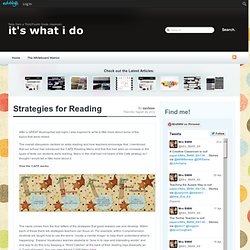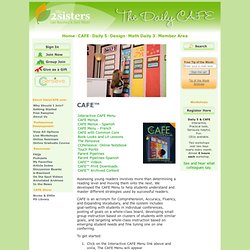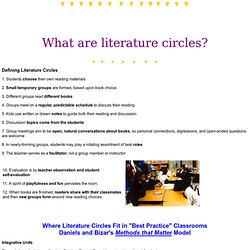

Your favorite authors, reimagined as breakfast cereal mascots. If you're looking to start off your morning with a little bit of existential despair, we've got just the cereal for you.

In a new series, Authors as Breakfast Cereal Mascots, illustrator Kate Gavino imagines what would happen if you combined very serious literary writers with decidedly unserious sugary cereals. "My inspiration for this series was seeing a box of Urkel-o's online one day. It made me wonder if authors will ever get a chance to sponsor products on that level," says Gavino.
"This was my attempt to make that alternative universe true, if only in a set of drawings. " Gavino's illustrations don't only explore the absurdist side of the literary world though. Check out these delicious literary cereals below for a healthy, balanced start to your day. Show As Gallery Have something to add to this story? BONUS: 5 Things You Didn't Know About Cereal. How do you get students to read for pleasure? “There are perhaps no days of our childhood we lived so fully as those we spent with a favorite book.”

Marcel Proust Reading seems to make us smarter. Here’s Keith Stanovich explaining why: For most people, this is uncontroversial. We talk a lot about the power of books and the need to get more children to read for pleasure. We know enjoying reading matters (or at least we’ve found some correlations between reading for pleasure and attainment. Christina Clark , Children’s and Young People’s Reading in 2013, Findings from the 2013 National Literacy Trust’s annual survey But how frequently students read also correlates stongly with attainment: If we have no control over what students enjoy, we do at least have some control over how frenquently they engage in different activities in schools. Strategies for Reading « It's What I Do. After a GREAT #ozengchat last night, I was inspired to write a little more about some of the topics that were raised.

The overall discussion centred on wide reading and how teachers encourage that. I mentioned that our school had introduced the CAFE Reading Menu and that this had seen an increase in the types of texts our students were reading. Many in the chat had not heard of the Cafe strategy so I thought I would tell a little more about it.
How the CAFE works The name comes from the four letters of the strategies that good readers use and develop. Different strategies are better suited to different text types, our students must have three books in their reading bags at all times; a fiction, non-fiction and picture fiction. A great example of using a non-fiction text is the Comprehension strategy, “Use text features.” I = this is the student, I am responsible for choosing the right books P =Purpose. Stage 4 Wide Reading Assessment edited. Stage 5 Wide Reading Assessment - edited. The Fantasy Shed. Resources.mhs.vic.edu.au/english/files/realboysread.pdf.
Www.thedailycafe.com/public/department105.cfm. Assessing young readers involves more than determining a reading level and moving them onto the next.

We developed the CAFE Menu to help students understand and master different strategies used by successful readers. CAFE is an acronym for Comprehension, Accuracy, Fluency, and Expanding Vocabulary, and the system includes goal-setting with students in individual conferences, posting of goals on a whole-class board, developing small group instruction based on clusters of students with similar goals, and targeting whole-class instruction based on emerging student needs and fine tuning one on one conferring. To get started: Click on the Interactive CAFE Menu link above and voila, The CAFE Menu will appear Next, Click on the column titles Comprehension, Accuracy, Fluency and Expand Vocabulary, (also, Behavior is located at the bottom) to learn about those goals.
The CAFE&0153; Menu. What are literature circles? 1.

Students choose their own reading materials 2. Small temporary groups are formed, based upon book choice 3. Kids Share Book Recommendations. Use Online Reading Logs, Find Books At Their Reading Level. Mrs Mavrakis' Year 10 English Book Club. Wide reading program middle years. LITERAL The Hobbit Trailer.
The Fantasy Shed. CAFE™ Kids Share Book Recommendations. Use Online Reading Logs, Find Books At Their Reading Level. Mrs Mavrakis' Year 10 English Book Club. The CAFE&0153; Menu.